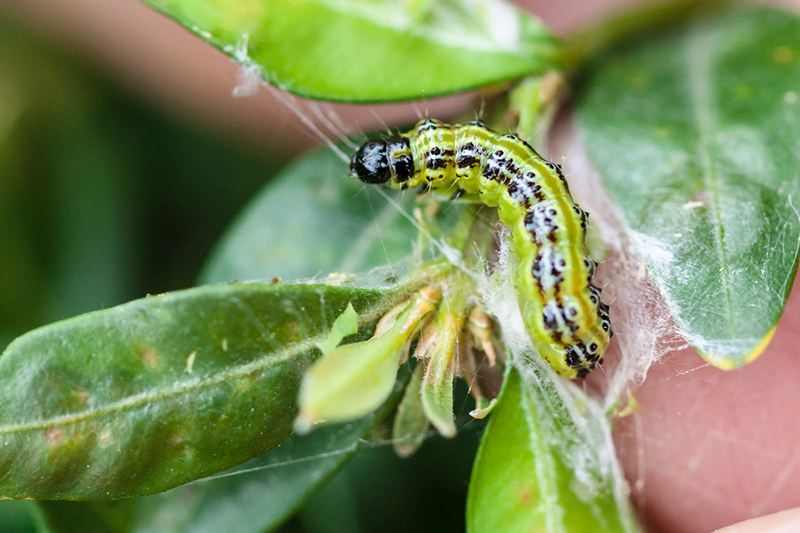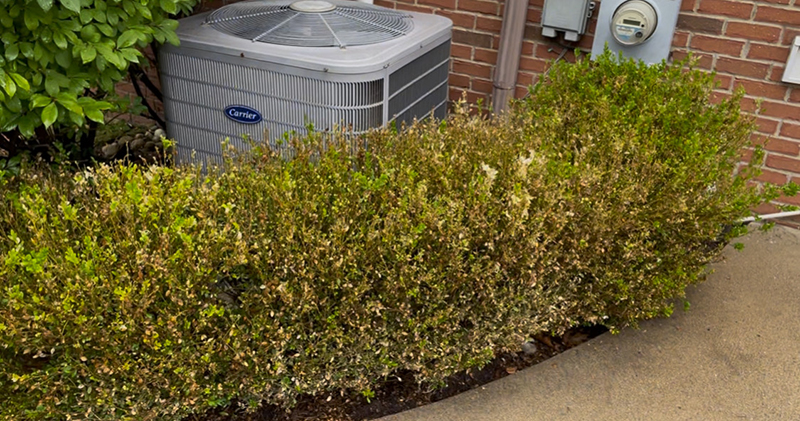The boxwood moth (also known as box tree moth) is an invasive species that has become a problem for homeowners in Milford. It has a huge destructive impact on boxwood plants and shrubs. In recent years, the pest has spread across Europe and North America.
The boxwood moth was first identified as a new pest in the United States within the last ten years.
Milford homeowners can learn to recognize the signs of the moth, the damage, and its lifecycle. It’s the first step in controlling this pest.
This guide will help you learn about the boxwood moth and offer preventative measures to help safeguard boxwood plants.

(Image from Inspection Canada)
The Origins of the Boxwood Moth
The boxwood moth originates from East Asia, native to regions such as China, Korea, and Japan. Here, it coexists with natural predators that help control its population.
In the last few years, the spread of the boxwood moth to the USA and Canada has disrupted these fragile ecosystems. We lack the predators to manage their rapid spread.
The boxwood moth was first identified as a new pest in Europe in the early 2000s. It was first detected in the United States in 2021.
Host Plants and Susceptible Species
Plants often affected by the boxwood moth are usually referred to as boxwood plants, belonging to the Buxus genus. Homeowners often plant them as ornamental plants.
The boxwood moth may also target other ornamental plants. But the damage caused by the pest is more evident on the leaves of boxwood plants. The larvae consume significant portions of foliage, leading to a loss of leaves and reduced plant health.
The Lifecycle of the Box Tree Moth
The boxwood moth lifecycle has several stages. Each stage contributes to the destructive impact of plants.
It begins with the laying of eggs, usually on the underside of boxwood leaves. The eggs hatch into young caterpillars, which immediately start feeding on the plant.

When the caterpillars mature, they cause more damage by consuming larger areas of the plants. Finally, the larvae pupate and emerge as adult moths. The adult boxwood moths can be recognized by their distinctive white (or brown) wings adorned with black stripes. The moths have a wingspan ranging from 1 to 1.5 inches and are responsible for laying the next generation of eggs.
Pest Management Practices
The best advice for treating boxwood moth infestations is to contact your local arborist. Preferably a company that provides Plant Health Care services. Such a company will follow pest management best practices to mitigate the risk of further spread.
Preventative Insecticide Applications
For home gardeners and professional landscapers, preventative insecticide applications can be an effective way to manage boxwood moth infestations.
Several insecticide options are available, targeting the young caterpillars before they cause extensive damage.
Application timing is crucial and should coincide with the early stages of the pest’s lifecycle.
Proper application techniques and regular monitoring of boxwood plants are essential for achieving successful control.
How to Protect Boxwood Plants in Milford, Michigan
Boxwood moth infestations have continued to deal blows to Boxwood plants in Milford and surrounding areas.
Ascension Tree Care offers specialized pest management and plant health care programs to protect our local plants.
We have designed these programs to address the challenges posed by invasive moths. To ensure the long-term health of trees and plants in the region.

Our expert knowledge, timely interventions, and proper disposal methods combat pests like the boxwood moth. We provide guidance to homeowners and help them recognize early signs of infestation.
If you’re dealing with an infestation today or want to protect your landscape before you have problems, working with experienced professionals is crucial. Call today to ask about our Plant Health Care programs.
